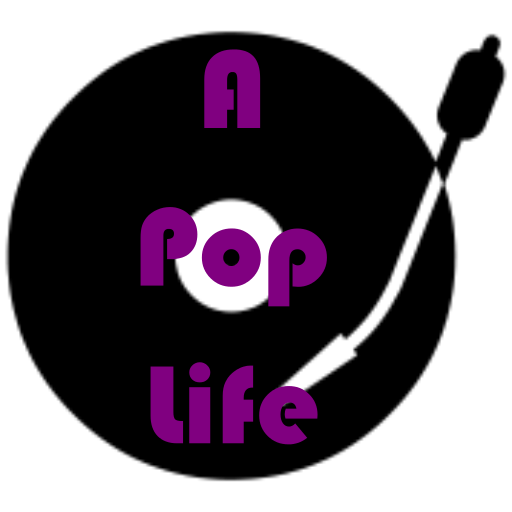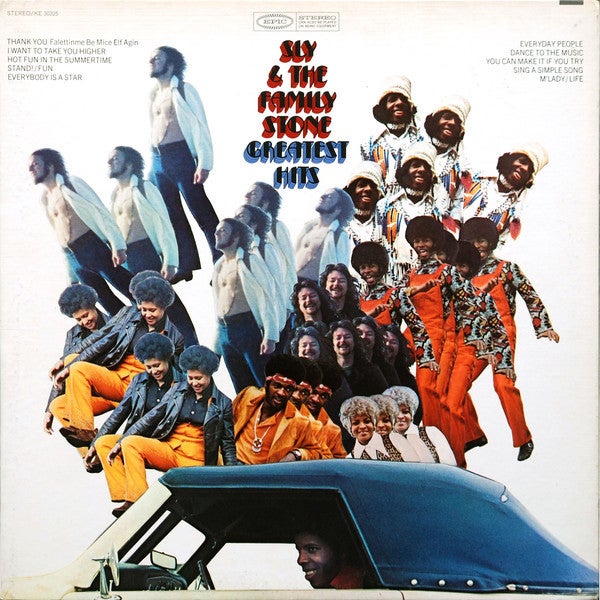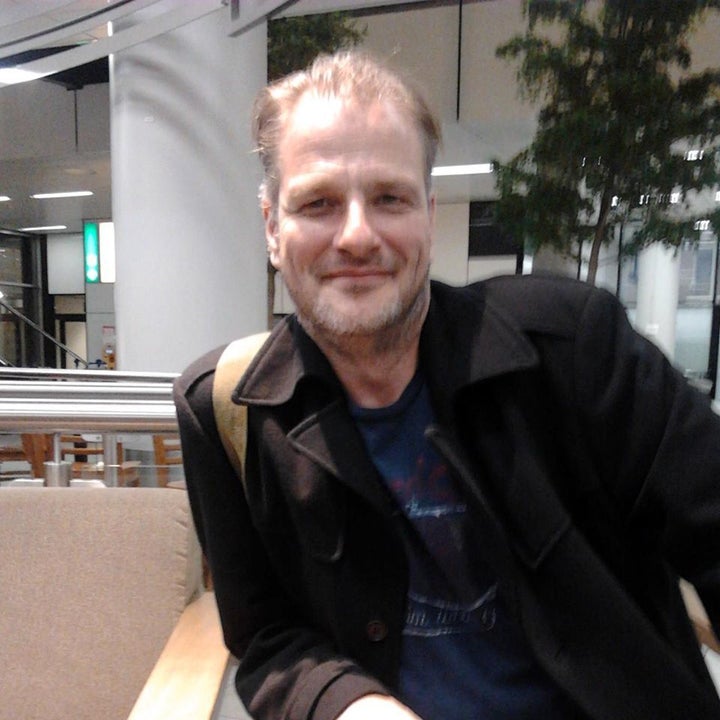
Over the last few years, I have been reading a lot of music blogs. My favorites are those that connect the past that I can relate to over the course of my lifetime (since 1974) to the present and looks to how the music of the pas and present shale the future. One of the blogs I came across that I felt accomplished that was the blog, A Pop Life. The blog is hosted by Erwin Barendregt, who lives in the Netherlands. This was one of the other reasons I found the blog interesting: for a long time artists of color often felt more appreciated for their talent overseas than at home. Many fled the segregated chitlin’ circut in the U.S. to tour and play in venues outside of the country that welcomed them with less hostility than at home. To me, this was the interesting part of Barendregt’s blog and one of the first questions I asked him in our interview:
AS: How did you decide to write about soul music, not just contemporary, but about the classics?
EB: One of the things I was going to do was write about music I liked and owned--- meaning that I had to have a physical copy of it, be it a CD or LP--- each genre, alike.
In 1987, I started work at the renowned record store Concerto in Amsterdam. Many artists go to that record store when they’re in town. The collection is huge, with the second-hand collection being the main attraction. I worked at that department.
Apart from my being able to complement my Prince collection of singles and 12-inches at an enormous rate, I got to hear a lot of all the classic albums at the store, where we were allowed to play the music we wanted, as long as it didn’t get too weird. Nearly all my salary went straight back to the store. I bought everything.
This year, I attended two seminars by Prince engineer, Susan Rogers, in Rotterdam. She spoke about finding your own musical street that contains the music that clicks, that feels right, at home, even. For me, it always has been Black music. I remember being a young boy, going through my father’s music collection and landing upon a compilation album on which a photo of Sly & The Family Stone was placed. It was the same photo that graces the 1970 Greatest Hits package. The compilation featured ’Family Affair,’ still one of my all time favorite songs. That was my musical street. That was the kind of music I was drawn to. But in The Netherlands, it was not played that much on the radio. It was mainly prog-rock and pop music.
Later on, being a Prince fan, I studied the classics following the influences of Prince. So I got to know some incredible music: P-funk, Sly Stone, Al Green, etc. From there I kept on digging and went ever deeper into funk, go-go, soul and r&b.
When rap entered the music scene, I was not so sure how I should see it. But when Public Enemy came long I was sure. I was blown away by Chuck D’s commanding way of rhyming. He was intimidating. After I saw Public Enemy live at the Paradiso in Amsterdam in 1992 I became a life-long fan of Chuck D.
One of the ‘all-time’ classics, of course, was What’s Going On, one of the top 5 albums of all time for me. The melodies, the sheer beauty of Marvin’s voice and music was incredible. And the message was (and still is) fresh and meaningful. I played that album to death and absolutely adored it.
As to why I write about the classics: I write about the music I like (and own), and there are a lot of classics to be loved.

AS: Your blog has a lot of articles about Prince. Tell me when you became a fan, why you have chosen to give him such a platform and what his music and his passing has meant to you?
EB: In 1984 I had just turned 18. I was wild about music, which at that particular time was new-wave. I had heard of Prince and liked Controversy and 1999 which were released as singles in The Netherlands.
Prince, however, was not a force to be reckoned with.
InJune of 1984, when I was in my favorite bar, I heard a soaring guitar, followed by a moaning-like sound going from left to right and then a glorious drum-beat and a sparse synth-line. I clearly remember where I stood in the bar, how the lighting was, what I had in my hands (cigarette and Jägermeister), stopping all conversation to listen to this incredible sound. The song was absolutely genius. I had never heard anything like it; I was floored. After the full 5:52 minutes, I was overwhelmed. I rushed over to the DJ and asked him about who, what, where [we had just listened to]? It turned out to be an import 12-inch of the latest Prince release, ‘When Doves Cry.’ My musical life, would never be the same again.
After the maxi-single was available in the Netherlands, I immediately bought it. The B-side, ’17 Days,’ was also genius. Who was this person? Why hadn’t I listened to him before? I mean, really listened? Of course, I went and saw the movie Purple Rain and bought the album. It really was (and still is) a groundbreaking album. It has funk, soul, rock, sensual balladry and all with a definite pop-feel.
In 1985 I bought Around The World In A Day on a new format: the compact disc. The fact I didn’t have the player yet, which cost a fortune at the time, didn’t matter. I had to have it. I taped the album and was, once again, swept off my feet. Those songs, ‘Around The World In A Day,’ ’Paisley Park,’ etc. But the real killer was ’Condition Of The Heart;’ a stunningly beautiful and moving song. At the time, I didn’t know how Prince’s modus operandi worked--- playing all these instruments by himself, and arranging, producing and composing as well--- but it was impressive.
In March of 1986, the single ’Kiss’ was released. There was no turning back form that. This truly was the Mozart of the modern age. The album Parade was the definite ‘proof.’ There’s no album that sounds like that album--- careless, bold, daring, funky, fearless and exciting. In August of 1986, I got the chance to see Prince & The Revolution at the Ahoy in Rotterdam. A lifelong fascination was cemented that evening. It still is the best show I have ever seen and was the first new story on Prince that I posted on my blog.
Since then, I have seen him live over 40 times. There never will be another one like him again. In my mind, he was ultimate showman and musician. On April 21st, 2016, I had just come home from work, when my father called and told me Prince was dead. I thought it was a joke. Almost immediately, I saw news clippings coming by on Facebook, Twitter, e-mail, Whatsapp, etc. Something was up at Paisley Park. A body had been found, but it was not certain who it was. Confirmation came very quickly, Prince, the last living musical genius, was dead, at just 57 years old. I couldn’t believe it.
Within days I posted an in memoriam on Facebook, where I tried to do justice to the man I had followed closely over the last 32 years, and whom I had seen over 40 times live. In a sense, that led to the founding of my blog: A Pop Life, called after the song ‘Pop Life’ in July of 2016. In October, I launched my English site. I write all my stories in Dutch and subsequently translate them into English.
I decided to start my blog for a number of reasons: One being I wanted to document the music I was fond of in the past and present. Obviously Prince played a major part in that. I decided early on to treat every artist the same, but Prince would receive extensive coverage, including the albums I didn’t like, including Diamonds And Pearls and Love Symbol/O(+>. The articles on Prince are well read and even commented on by Prince aficionados like engineer Coke Johnson and singer Jill Jones.
I also write about the so-called “Prince satellites” (The Time, Vanity 6, Madhouse, Jill Jones, etc.) following the anniversary timelines. It is my goal to have most of the albums (and satellite acts) written about within a five year cycle. This year I have written extensively about 1982 and 1987 with exhaustive pieces on 1999 and Sign O’ The Times. The piece on Sign O’ The Times has proven to be extremely popular, since it has been viewed over 14,000 times.
I try to write about the way the albums were conceived and where my life was at, at that particular space in time.
AS: There's a few pieces about Marvin Gaye here. It seems that ‘What's Going On’ continues to prove its timelessness. How do you think people should be writing about that album and about Marvin today, given what's going on in the world?
EB: What’s Going On is indeed a timeless album. The humanity just oozes from that album. The concern Marvin Gaye portrays for the world, be it in general or within his own circle of influence, is heartfelt end sincere. I think it’s one of those rare instances where art and message complement each other and add to the current state of the nation. Marvin Gaye is deeply concerned by war, the environment and the future. I think it’s a universal message that seems to be true even more today than at the time of the original release.
The current times are troubling, to say the least. Questionable leaders like Putin, Erdogan and Trump are chosen to lead. Being a parent, I am deeply concerned about the way the world seems to be headed.
As trivial as it may seem, I am convinced that art, in every imaginable form, is a great way to make people think. Many of today’s leaders target art for a reason. They know it can make people stop and listen. Am I naïve? Maybe so. Was Marvin Gaye naïve? Maybe so, but he nevertheless did express his feelings and emotions and made a timeless piece of art which enlightens people to this day.
So, how should people be writing on that album? It really doesn’t matter to be honest. Just write about it, place it into context and embrace the humanity of it. Keep the album and its message alive.
AS: How do you go about selecting the content for your posts.
EB: I select the content for my posts following two simple ‘rules:’
1. I must own a physical copy of the particular album
2. The album has to have some kind of anniversary (5, 10, 15, etc. years after release, re-release, etc.)
No more rules. Since I own the albums they mean, or have meant, something to me. Whether it had a connection with some sort of emotion, event or just because the music was stunning. Either way, I can write about it and have something to say about it.
The selection process isn’t that hard, but finding the right angle to write is somewhat harder. It seems to me that my European view on things is what makes the articles stand out. The feedback I get from my readers, particularly on the Prince articles, substantiate that thought.
When it comes to Prince, I have the ambition to write Prince’s story, but according to my recollections and taste, which is European and Dutch in particular. It differs from the U.S. view on Prince’s work. Prince’s rise starts with Dirty Mind, according to the U.S. view. Europe, largely, followed four years later, with the emphasis being 1986-1988 as the pinnacle Prince years, which was the main reason behind his love for Europe for a long period of time.
Apart from finding your own musical street, Susan Rogers also stated that it was important to educate people, and future generations, on Prince and the way he made, lived and breathed music; not just for the music’s sake, but to learn from the vast legacy and to do it justice. That ‘task’ is something I try to do [in] writing about Prince, his immense body of work and the way that mad me feel at the time, as well as now.

Here’s a list of upcoming posts on A Pop Life:
Closing of 2017 12/30/2017
Prince – Xpectation 01/01/2018
Prince – C-Note 01/04/2018
Parliament – Flash Light 01/10/2018
Fischer-Z 1979-1981 01/18/2018
You can find Erwin Barendregt on Facebook
